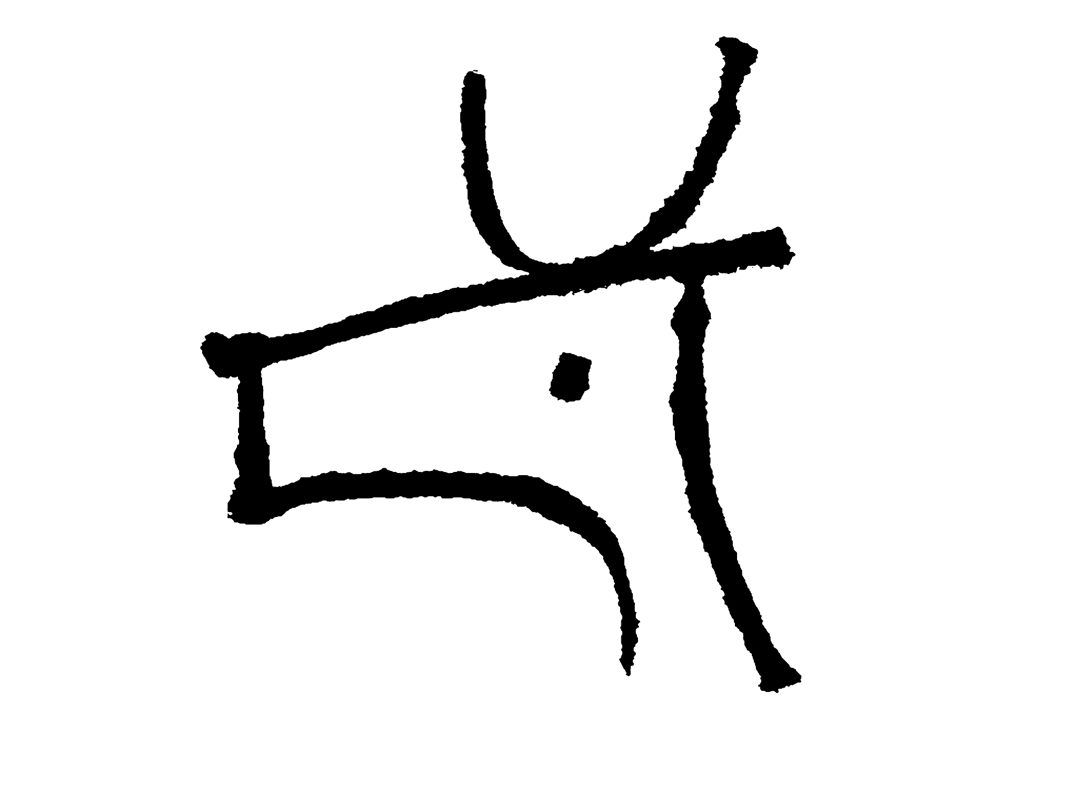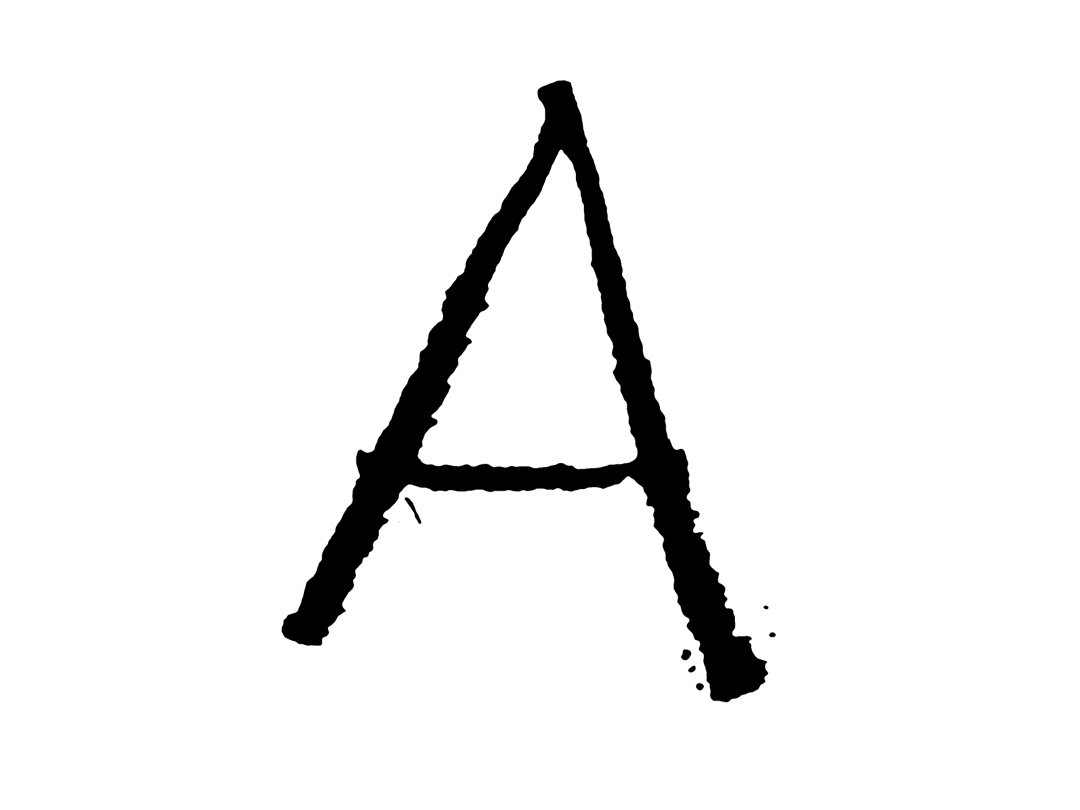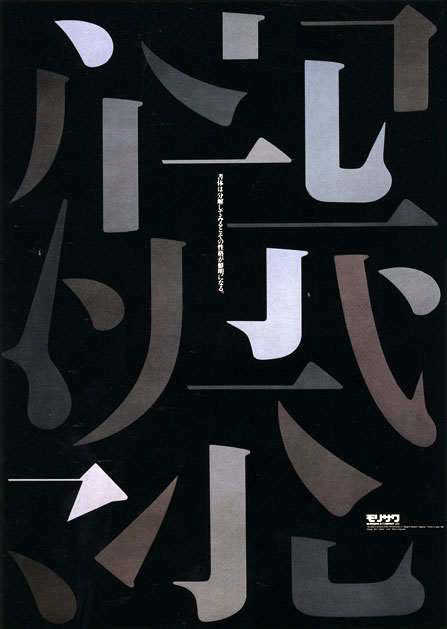
Occupant Fonts
のタイプデザイン哲学
サイラス・ハイスミス
タイポグラフィの文字、すなわち書体の文字は、手書きの文字から進化してきました。
ラテンアルファベットの起源や、長い年月をかけて人々が積み重ねてきた進化の歴史を無視することは、書体デザイナーにとって愚かなことです。読み書きを学ぶだけで、ラテンアルファベットの古くからの手書きの慣習や伝統に少しずつ染まっていくものです。最も実験的な書体でさえ、その核心にはこれら古代の黒いストロークが含まれていることが多いです。
しかし、タイポグラフィの文字は手書きの文字とは根本的に異なります。
私たちは、ペンや筆で書かれる文字とは全く異なる道具や技術を使ってこれらを作ります。そして、タイポグラフィの文字が持つ独自の特徴を認識しないことも、書体デザイナーにとってまた愚かなことです。
書体デザイナーが文字を描くとき、ペンや筆で線を引く代わりに、輪郭を描きます。輪郭とは線ではなく、境界線です。その境界線の一方には黒があり、もう一方には白があります。この意味で、タイポグラフィの文字は黒と白のエリア、または形で構成されています。特に字形の間のスペースを考慮すると、白い形がより多くの面積を占めることがよくあります。
Occupant Fontsでの私たちのタイプデザインへのアプローチは、これら二つの要素、すなわち黒いストロークと白い形のバランスによって形成されています。黒いストロークはタイポグラフィの文字の手書きのルーツを指し、白い形は書体の字形を形成する輪郭を描くときに実際にデザイナーが描くものです。この戦略が、Occupant Fontsの主な目標である、独自性がありながらも実用的な書体を描くことへの助けになると私たちは信じています。
The Occupant Fonts
philosophy of type design
Cyrus Highsmith
Typographic letters, the letters of a typeface, evolved from handwritten ones.
It would be foolish for a type designer to ignore the Latin alphabet’s roots and the thousands of years of evolution and human effort that helped to form it. Just by learning to read and write, you start to become indoctrinated in the Latin alphabet’s long standing hand written conventions and traditions. Even the most experimental typefaces often contain these ancient black strokes at their core.
However, typographic letters are also fundamentally different from handwritten letters.
We make them with totally different tools and totally different techniques than letters written with a pen or a brush. And the type designer would be also foolish not to recognize what makes typographic letters unique.
When the type designer draws a letter, instead of using a pen or brush to make a mark, they plot a contour. A contour isn’t a mark. A contour is a border. One side of that border is black, on the other side is white. In this sense, the typographic letter is made of black and white areas, or shapes. Often it’s the white shapes that take up the most area especially when you consider the space between glyphs.
Our approach to type design at Occupant Fonts is formed by a balance of these two things: black strokes and white shapes. Black strokes refer to a typographic letter’s handwritten roots. White shapes are the things the type designer actually draws when they plot the contours that form the glyph of a typeface. We believe this strategy helps us towards the main goal of Occupant Fonts: drawing original typefaces that are distinctive as well as useful.

輪郭とは線ではなく、境界線です。
A contour isn’t a mark. A contour is a border.
カウンターパーツ
Occupant Fontsの主な役割は、Morisawaの日本語書体を念頭に置いた新しいラテン書体を開発することです。
私たちはこれらの書体を「カウンターパーツ」と呼んでいます。「カウンターパーツ」という言葉は外交の世界から来ています。これは、異なる場所で同様の機能を果たす人物や物を指します。カウンターパーツ書体は、独立して使えるラテン書体でありながら、必要に応じて日本語書体と一緒に使うことができます。これにより、各デザインが自己を表現しながら、一方の文化のアイデアを他方に押し付けることなく、共存できるのです。
カウンターパーツ・プログラムの種は、20世紀にまで遡り、伝説的な日本のグラフィックデザイナー、田中一光によって植えられました。

田中氏は、クラシックなラテン書体「ボドニ」を高く評価していました。彼は、ボドニの太さと細さの劇的なコントラストと急に切り落とされたセリフ(飾り)にインスパイアされた漢字レタリングを開発しました。最終的に、これはMorisawaの書体「Kocho」の開発に繋がりました。
「Kocho」は、それ自体が美しく機能する書体でありながら、異なる書記体系であるボドニとも美しく組み合わせられる書体の素晴らしい例です。田中氏はこれらを彼の多くの 有名なポスターで一緒に使ったり、個別に使ったりしました。2015年に京都で行われた回顧展でこれらの作品を多く鑑賞する機会があり、マルチスクリプトの書体デザインが結果だけでなく、新しいタイプフェイスのアイデアを生み出す手段にもなり得るという考えに目を開かされました。
Occupant Fontsにとって、カウンターパーツ書体の概念は、独自のデザインへの新しい道を切り開くことです。インスピレーションは時折、Morisawaのライブラリにあるフォントから得られますが、他の時にはグラフィックデザイナーやアーティストの作品から来ることもあります。大阪や東京を散策中に見かけた看板や、低俗な印刷物の断片から得られることもあります。しばしば、アイデアは日本の同僚とのタイプデザインやタイポグラフィについての会話から生まれます。
どこからアイデアが来るにせよ、私たちのすべての作業は黒いストロークと白い形を考えることのバランスに根ざしています。Morisawa Fontsのおかげで、私たちの書体が日本のデザイナーにより簡単にアクセスできるようになったことを非常に嬉しく思っています。次に何が起こるか、非常に楽しみにしています。
Counterparts
Occupant Fonts’ main role at Morisawa is to develop new Latin typefaces with Morisawa’s Japanese typefaces in mind.
We call these typefaces “counterparts”. The word counterpart comes from the world of diplomacy. It refers to a person or object that performs a similar function as another in a different place. Counterpart typefaces are Latin typefaces that can stand alone but work together with Japanese typefaces when needed. It allows each design to be itself, without imposing one culture’s ideas on another.
The seeds for our counterpart program were planted all the way back in the 20th century by the legendary Japanese graphic designer, Ikko Tanaka.
Tanaka admired the classic Latin typeface, Bodoni. He developed kanji lettering inspired by the dramatic contrast between Bodoni’s thick and thin strokes, and abrupt squared-off serifs. Eventually, this led to the development of the Morisawa typeface, Kocho.
Kocho is a striking example of a typeface that works beautifully on its own terms while also combining well with another typeface, Bodoni, from a different writing system. Tanaka used them together as well as separately in many of his famous posters. I was lucky to view many of these works at a retrospective exhibition in Kyoto in 2015. It opened my mind to the thought that multi-script type design wasn’t just about the results. It can also be a way to generate new ideas for typefaces of all kinds.
For Occupant Fonts, the concept of counterpart typefaces offers a novel path to original designs. Sometimes inspiration comes from the fonts in Morisawa’s library. Other times it might be the work of a graphic designer or an artist. It could come from a lowly piece of printed ephemera or a sign photographed while on a walk through Osaka or Tokyo. Often, ideas grow out of conversations about type design and typography with our Japanese colleagues.
Wherever the ideas come from, all of our work is rooted in our core approach to type design—the balance between thinking about black strokes and white shapes.
Thanks to Morisawa Fonts, we are very excited that our typefaces are now more easily accessible to Japanese designers. We are looking forward to seeing what happens next!
カウンターパーツ書体の概念は
独自のデザインへの新しい道を切り開くことです。
The concept of counterpart typefaces offers
a novel path to original designs.
Citrine
Citrineは、A1ゴシックのカウンターパートで、Occupant Fontsとモリサワのコラボレーションによって生まれました。これは、西洋のカリグラフィーにルーツを持ち、黒と白の形のバランスが慎重に調整されたヒューマニスト・サンセリフです。その結果、温かみがありノスタルジックなデザインとなりました。
Citrine, the counterpart for A1 Gothic, was a collaboration between Occupant Fonts and Morisawa. It’s a humanist sans serif with roots in western calligraphy and a carefully tuned balance between the black and white shapes. The result is a warm and nostalgic design.
Magmatic
Magmaticは、モリサワのアイコニックなシリーズゴシックMB101のカウンターパートとして設計されました。昭和時代のサンセリフのローマ字レタリングや看板、ポスター、マッチ箱に見られるタイポグラフィにインスパイアされました。多くのデザイナーと同様に、私はこれらの機械的で実用的な形に惹かれました。Magmaticの課題は、デザインの本質的なスタイルを変えずに、どこまでウェイトや幅を広げたり縮めたりできるかに挑戦することでした。
Magmatic was designed as a counterpart for Morisawa’s iconic series MB101-Gothic. I was inspired by Showa-era sans serif romaji lettering and type found on signage, posters, and matchboxes. Like many designers, I was attracted to these mechanical and utilitarian forms. The challenge in Magmatic was to push how far a design could expand and contract in weight and width, without changing its essential style.
Occupant Oldstyle
Occupant Oldstyleは、明朝体の三角形の「鱗(うろこ)」のようなストロークエンディングや、丸ゴシック体の丸い端部にインスパイアされています。構造は伝統的な西洋のアプローチを反映していますが、セリフはペンや筆で自然に作ることができない形に簡略化されています。Occupant Oldstyleは、日本語とラテン文字の世界、およびタイポグラフィとカリグラフィの文字形の間の境界を跨いでいます。特定の書体にインスパイアされたわけではないので、Occupant Oldstyleにはまだ日本語のカウンターパートはありません。
Occupant Oldstyle is inspired by the triangular uroko stroke endings found in Mincho style typefaces as well as the rounded terminals in the Maru Gothic style. While its structures reflect a traditional western approach, the serifs are simplified into shapes unlike what can be produced naturally with a pen or brush. Occupant Oldstyle straddles the worlds of Japanese & Latin type as well as the divide between typographic and calligraphic letterforms. Since it wasn’t inspired by a specific typeface, Occupant Oldstyle doesn’t have a Japanese counterpart. Yet.
Dispatch 2
既存の書体にもカウンターパートを見つけることができます。たとえば、工業的な力強さを持つスラブセリフのDispatch 2は、モリサワのサンセリフである新ゴのカウンターパートになることができます。スラブセリフによって形成される白い形は、より複雑な日本語の文字と相性が良いです。この意外な組み合わせは、私がRhode Island School of Designの生徒からインスピレーションを受けた作品に由来しています。
It’s also possible to find counterparts for existing typefaces. For example, the industrial-strength slab serif, Dispatch 2, can be a counterpart of Morisawa’s sans serif, Shin Go. The white shapes formed by the slab serifs compliment the more complex Japanese characters. This unexpected combination was inspired by work from one of my students at Rhode Island School of Design.
2024年10月1日
サイラス・ハイスミス
和訳:XXXX